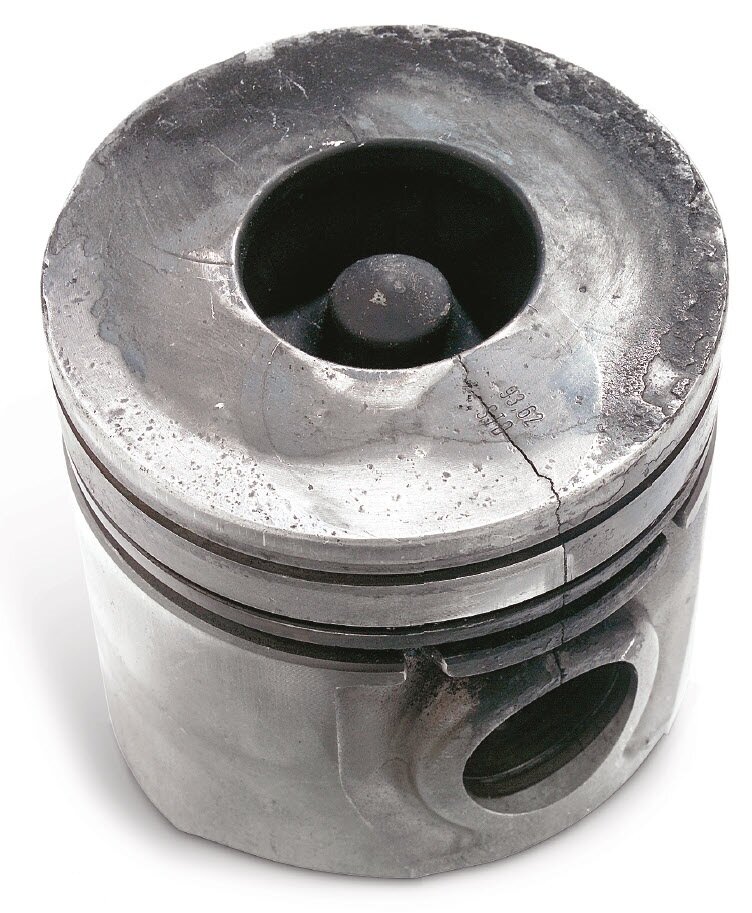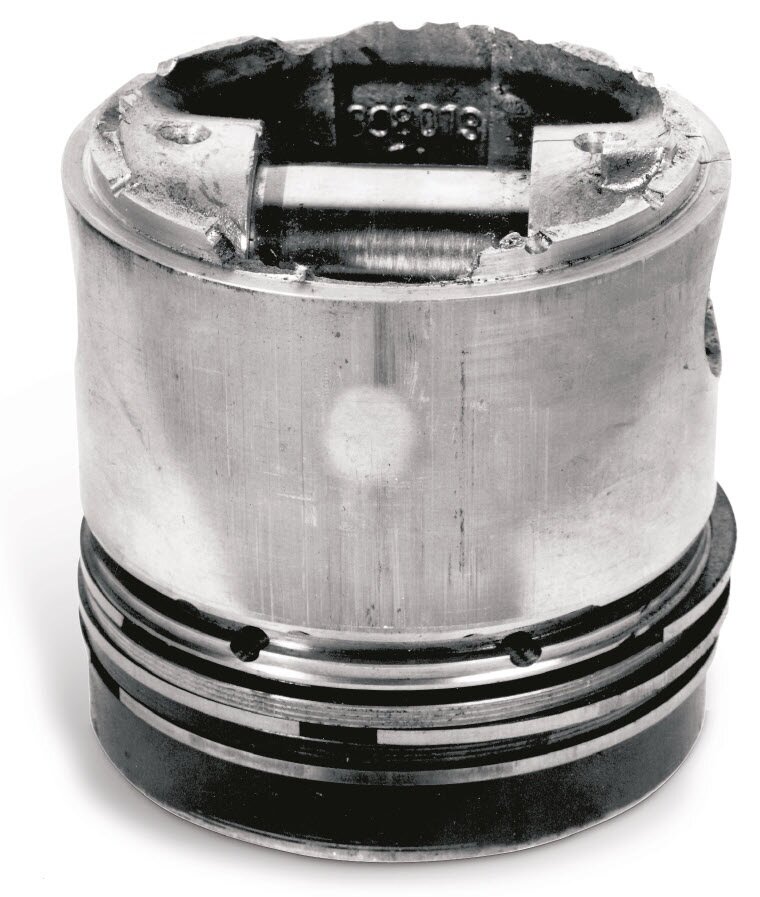Piston fracture due to the mechanical contact between piston crown and cylinder head
DESCRIPTION OF THE DAMAGE

- Impact marks on the piston crown (Fig. 1), cylinder head mating surface and both valves (not shown).
- Fracture in the direction of the piston pin due to vibrations and the effects of violent impact.
- Piston skirt has broken off in the lower oil ring groove, fracture surfaces display the characteristics of a fatigue fracture (Fig. 2).
DAMAGE ASSESSMENT

The cause is an exceptionally fast sequence of hard impacts as the piston crown strikes the cylinder head, which subjects the piston to such violent shock vibrations that cracks are generated. The piston also no longer runs straight in the cylinder and subsequently strikes the cylinder wall with its skirt. On pistons with a lower oil control ring (Fig. 2) the skirt often breaks in the area of the lower oil ring groove.
POSSIBLE CAUSES FOR THE DAMAGE
- Excessive clearances in the connecting rod bearings or a worn-out connecting rod bearing, particularly in conjunction with over-revving when driving downhill.
- The gap dimension (the minimum distance between the piston crown and the cylinder head) was too small at TDC of the piston. The following scenarios may have caused this:
- Pistons with an incorrect compression height. During engine reconditioning, the mating surface of the cylinder block is often reworked. If pistons with the original compression height are then refitted after machining, the piston protrusion may be too large. This is why pistons with a reduced compression height are available for repairs, enabling the piston protrusion to be kept within the tolerance range specified by the engine manufacturer.*
- Insufficient thickness of the cylinder head gasket. Many manufacturers provide cylinder head gaskets with different thicknesses for the same engine. This is necessary to compensate for component tolerances during production, and it also allows adaptation of the piston protrusion during repairs. For this reason, when carrying out repairs ensure that only cylinder head gaskets with the prescribed material thickness are used. This ensures that the specified gap dimension will be achieved after the repair. If the cylinder block is reworked or replaced during repair work, the thickness of the gasket must be re-determined depending on the piston protrusion in accordance with the engine manufacturer’s specifications.
CAUTION
Checking the freedom of movement by turning the engine by hand when it is cold does not guarantee that the piston will not strike the cylinder head when the operating temperature is reached. Reason: the piston and connecting rod increase in length as a result of thermal expansion, which reduces the gap between the piston crown and the cylinder head. Particularly on engines in commercial vehicles with large piston compression heights, the differences can be significant and reduce the freedom of movement of the piston at TDC by several tenths of a millimetre.